
Quy Nhon: The Hidden Gem of Vietnam's Coastline
Discover Quy Nhon, Vietnam's coastal gem, where pristine beaches, rich history, and vibrant local culture await to enchant every traveler.
Nestled between the bustling metropolises of Da Nang and Nha Trang, Quy Nhon offers a serene escape with its pristine beaches, historical sites, and vibrant local culture. The city's coastline is dotted with sandy stretches and calm, turquoise waters, providing an ideal setting for relaxation and water activities. Bai Xep Beach, with its golden sands and clear waters, is perfect for sunbathing and swimming, while Ky Co Beach, accessible by boat or a scenic drive, offers a more secluded experience. Quy Nhon's history is rich and varied, with Cham towers like Thap Doi standing as testament to its ancient past. These towers, dating back to the Champa Kingdom, provide a glimpse into the architectural prowess and cultural heritage of the region. The city also boasts the Long Khanh Pagoda, where visitors can admire the stunning Buddha statues and serene gardens. Food enthusiasts will find Quy Nhon a culinary delight. The city's seafood is legendary, with fresh catches served daily in local restaurants and street stalls. Don't miss out on trying the local specialty, Banh It La Gai, a sticky rice cake wrapped in leaves. For a more immersive experience, visit the bustling Quy Nhon Market, where you can sample a variety of local delicacies and shop for souvenirs. Quy Nhon is not just about beaches and food; it's also a hub for adventure. The surrounding countryside is perfect for hiking and exploring. Ham Ho Tourist Spot, known for its natural beauty, offers a mix of river landscapes and rocky terrains. For the more adventurous, trekking to the top of the Vung Chua Mountain rewards with panoramic views of the city and coastline.
Local tips in Quy Nhon
- Visit Bai Xep Beach early in the morning to enjoy the serene environment and avoid crowds.
- Carry local currency (Vietnamese Dong) as some small eateries and shops may not accept credit cards.
- Hire a local guide when exploring Cham towers to gain deeper insights into the historical significance.
- Try local seafood dishes at the Quy Nhon Night Market for an authentic culinary experience.
- Wear comfortable shoes if planning to hike Vung Chua Mountain or explore Ham Ho Tourist Spot.
- Check weather conditions before heading to Ky Co Beach as access can be tricky during the rainy season.
Quy Nhon: The Hidden Gem of Vietnam's Coastline
Nestled between the bustling metropolises of Da Nang and Nha Trang, Quy Nhon offers a serene escape with its pristine beaches, historical sites, and vibrant local culture. The city's coastline is dotted with sandy stretches and calm, turquoise waters, providing an ideal setting for relaxation and water activities. Bai Xep Beach, with its golden sands and clear waters, is perfect for sunbathing and swimming, while Ky Co Beach, accessible by boat or a scenic drive, offers a more secluded experience. Quy Nhon's history is rich and varied, with Cham towers like Thap Doi standing as testament to its ancient past. These towers, dating back to the Champa Kingdom, provide a glimpse into the architectural prowess and cultural heritage of the region. The city also boasts the Long Khanh Pagoda, where visitors can admire the stunning Buddha statues and serene gardens. Food enthusiasts will find Quy Nhon a culinary delight. The city's seafood is legendary, with fresh catches served daily in local restaurants and street stalls. Don't miss out on trying the local specialty, Banh It La Gai, a sticky rice cake wrapped in leaves. For a more immersive experience, visit the bustling Quy Nhon Market, where you can sample a variety of local delicacies and shop for souvenirs. Quy Nhon is not just about beaches and food; it's also a hub for adventure. The surrounding countryside is perfect for hiking and exploring. Ham Ho Tourist Spot, known for its natural beauty, offers a mix of river landscapes and rocky terrains. For the more adventurous, trekking to the top of the Vung Chua Mountain rewards with panoramic views of the city and coastline.
When is the best time to go to Quy Nhon?
Iconic landmarks you can’t miss
Ky Co Beach
Experience the breathtaking beauty of Ky Co Beach, a hidden gem in Vietnam with crystal-clear waters and stunning natural landscapes.
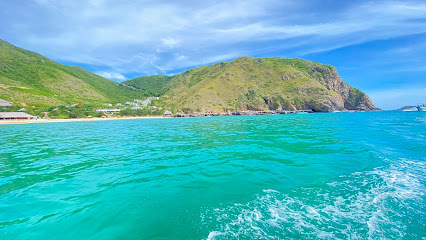
Công ty du lịch Quy Nhơn Tourist
Discover the beauty and culture of Quy Nhon, Vietnam with Quy Nhon Tourist, your trusted tour operator for unforgettable experiences.
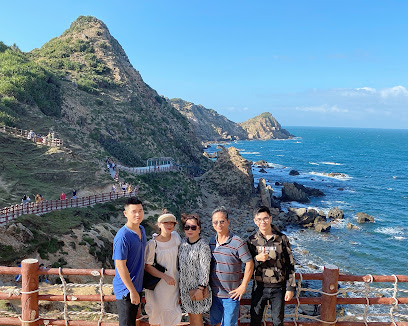
Linh Phong - Ong Nui Temple
Explore the serene Linh Phong - Ong Nui Temple, a vibrant Buddhist sanctuary offering stunning architecture and a peaceful retreat in Phu Cat District, Vietnam.

Banh It Cham Temple (Yang M'Tian)
Explore the ancient wonders of Banh It Cham Temple, a stunning blend of history and architecture in the heart of Binh Dinh, Vietnam.

Núi Vũng Chua
Explore Núi Vũng Chua: A breathtaking tourist attraction in Qui Nhơn, Vietnam, blending stunning landscapes with rich cultural heritage.
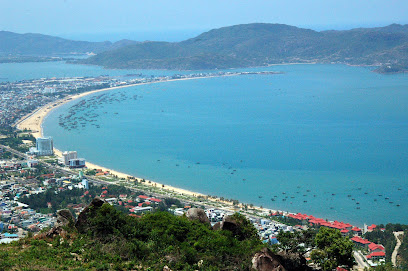
Bãi trứng - khu du lịch Ghềnh Ráng
Explore the enchanting Bãi Trứng at Gành Ráng, a coastal gem in Bình Định, where natural beauty meets local culture and adventure awaits.
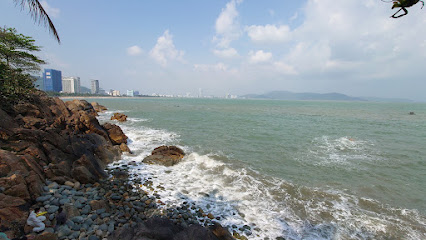
Quy Nhon Square
Explore Quy Nhon Square, a vibrant city park in Vietnam, perfect for relaxation, local cuisine, and cultural experiences.
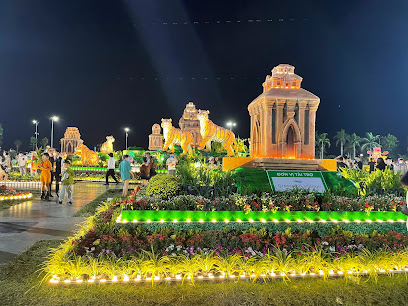
Bãi biển Quy Nhơn
Explore the stunning Bãi Biển Quy Nhơn, a serene beach destination in Vietnam known for its crystal-clear waters and captivating landscapes.
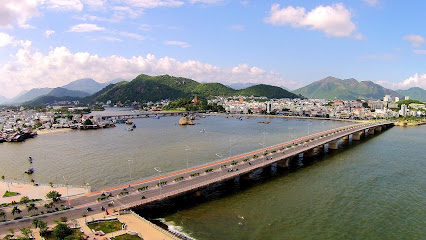
Eo Gió
Discover Eo Gió, a stunning beach in Bình Định, Vietnam, offering pristine waters, dramatic cliffs, and unforgettable outdoor adventures.

Quy Nhon Cathedral
Experience the architectural beauty and spiritual tranquility of Quy Nhon Cathedral, a must-visit destination for travelers in Vietnam.
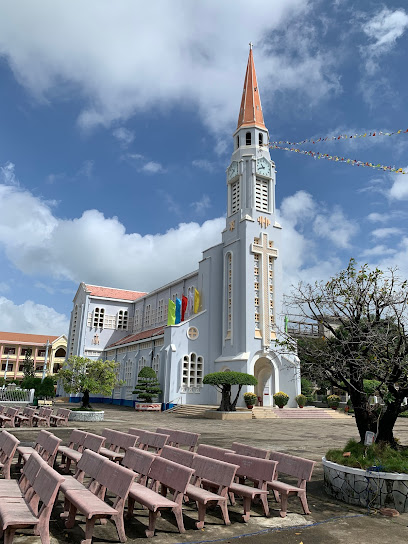
Seagate theme park
Experience the thrill and joy at Seagate Theme Park in Qui Nhon, Vietnam, where fun awaits for the whole family with rides, BBQ, and nature!
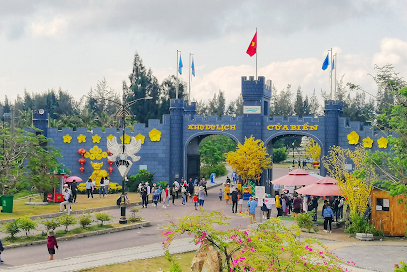
Tháp Đôi Quy Nhơn
Discover the enchanting Cham architecture and rich cultural history at Tháp Đôi Quy Nhơn, a must-visit heritage museum in Vietnam.
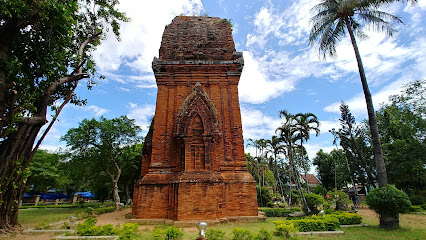
Quy Nhon Stadium
Experience the vibrant spirit of Quy Nhon at its iconic stadium, where sports and culture come alive in a picturesque coastal city.
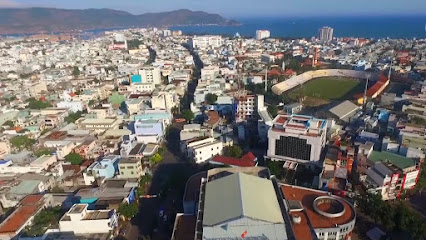
Han Mac Tu's Memorial House
Explore the serene beauty of Han Mac Tu's Memorial House, a cultural gem that celebrates the life and works of Vietnam's beloved poet amidst lush gardens.
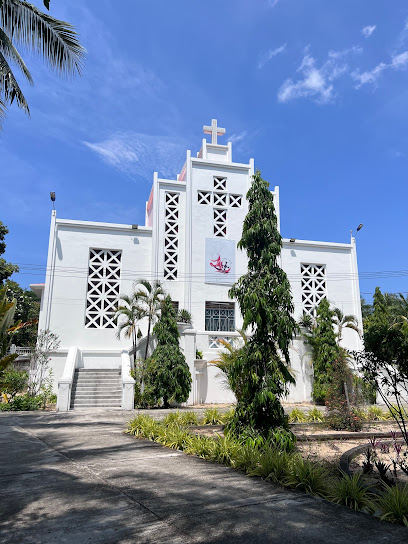
Long Khanh Pagoda
Experience the tranquil beauty and rich cultural heritage of Long Khanh Pagoda, a must-visit Buddhist temple in Qui Nhon, Vietnam.
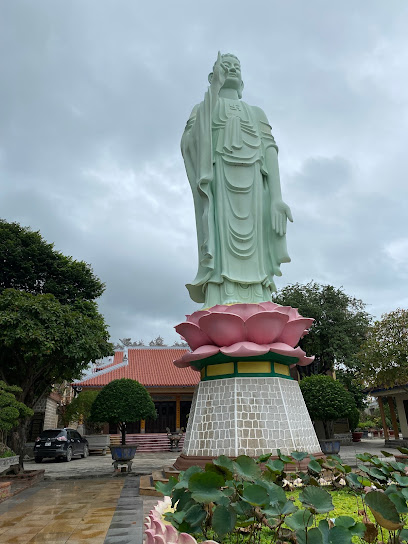
Unmissable attractions to see
Da Dia Reef
Discover the breathtaking beauty of Da Dia Reef, a geological marvel with stunning rock formations and crystal-clear waters in Phú Yên, Vietnam.
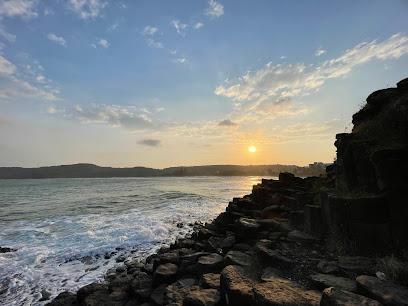
Ky Co Beach
Discover the breathtaking beauty of Ky Co Beach, Vietnam – a pristine paradise of white sands and azure waters perfect for relaxation and adventure.
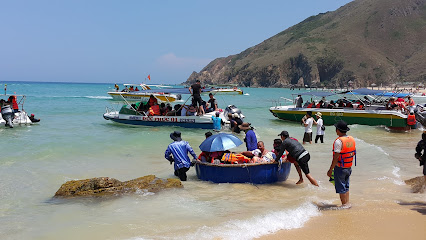
Linh Phong - Ong Nui Temple
Discover tranquility and cultural heritage at Linh Phong - Ong Nui Temple in Phù Cát, Vietnam, a serene escape for tourists and spiritual seekers alike.
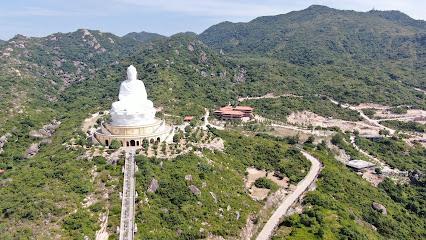
Banh It Cham Temple (Yang M'Tian)
Discover the ancient beauty of Banh It Cham Temple, a captivating site in Binh Dinh that showcases Vietnam's rich Cham heritage and stunning architecture.
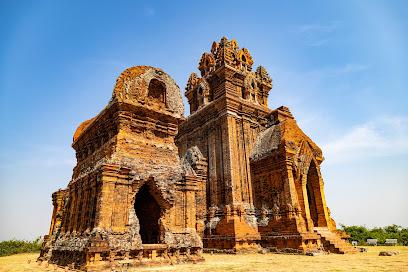
Ky Co Beach
Experience the idyllic beauty of Ky Co Beach, where golden sands meet azure waters, creating a tropical paradise in Quy Nhon, Vietnam.
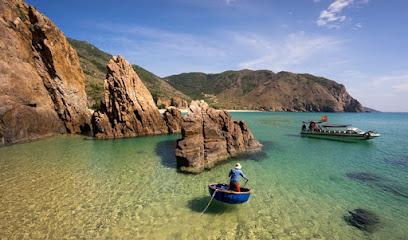
Vung Chua Mountain
Explore the breathtaking Vung Chua Mountain in Quy Nhon, Vietnam, where stunning views and rich biodiversity await every traveler.
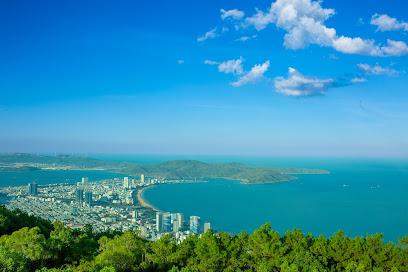
Bãi trứng - khu du lịch Ghềnh Ráng
Experience the serene beauty of Bãi Trứng, a coastal gem in Bình Định, offering stunning beaches, rich marine life, and a taste of local culture.
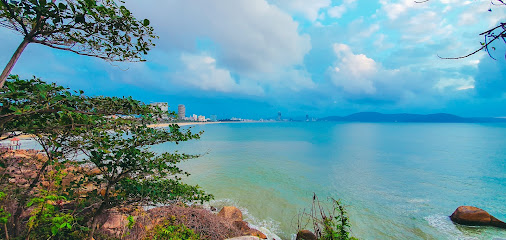
Quy Nhon Square
Explore the serene beauty of Quy Nhon Square, a vibrant city park offering lush greenery, stunning ocean views, and delicious local cuisine.

Quang Trung Statue
Discover the Quang Trung Statue in Qui Nhon, a majestic monument celebrating Vietnam's rich history and the valor of its legendary Emperor.
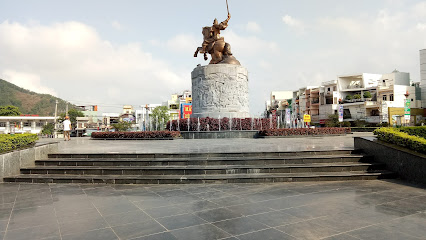
Seagate theme park
Experience the thrill of Seagate Theme Park in Qui Nhon, Vietnam, where fun and adventure await for families and thrill-seekers alike.
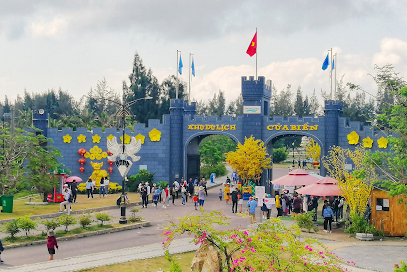
Han Mac Tu's Memorial House
Explore the serene Han Mac Tu's Memorial House in Quy Nhon, a tribute to Vietnam's beloved poet, surrounded by lush gardens and rich history.
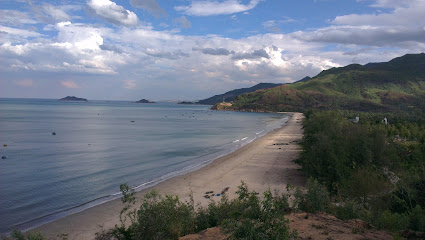
Long Khanh Pagoda
Explore the serene beauty and cultural richness of Long Khanh Pagoda, a hidden gem in Quy Nhon, Vietnam, perfect for spiritual seekers and nature lovers.
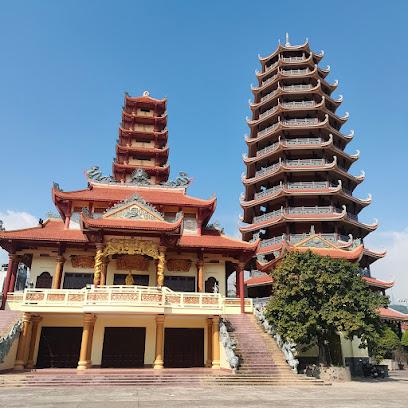
FLC Zoo Safari Park Quy Nhon
Explore FLC Zoo Safari Park Quy Nhon for an unforgettable adventure with diverse wildlife and engaging interactive experiences in Vietnam.
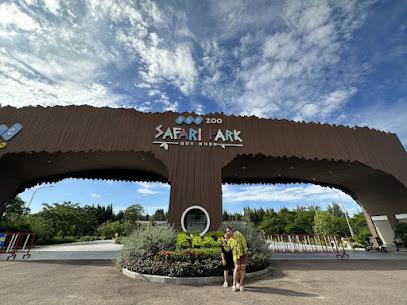
Hòn Khô
Discover Hòn Khô in Quy Nhơn: A breathtaking tropical island with stunning beaches, vibrant marine life, and delicious seafood waiting for you.
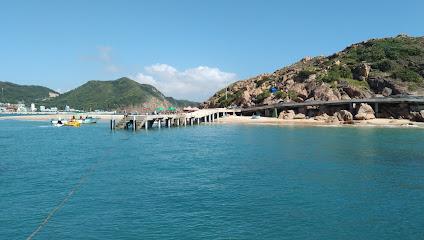
Bảo Tàng Tổng Hợp Bình Định
Explore the captivating history and vibrant culture of Bình Định at Bảo Tàng Tổng Hợp Bình Định, a premier museum destination in Qui Nhon.
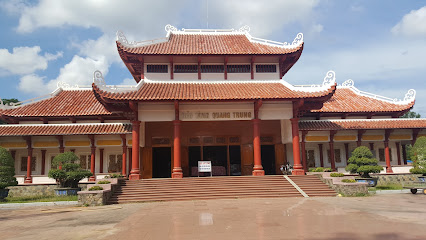
Essential places to dine
Hoa Hoa Seafoods Restaurant
Discover the flavors of Vietnam at Hoa Hoa Seafoods Restaurant – where fresh seafood meets local culinary traditions in Qui Nhon.
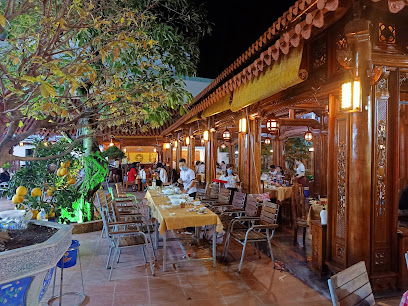
Gia Vy 2 Restaurant
Experience authentic Vietnamese flavors at Gia Vy 2 Restaurant in Qui Nhơn – a culinary gem offering delicious seafood and local specialties.
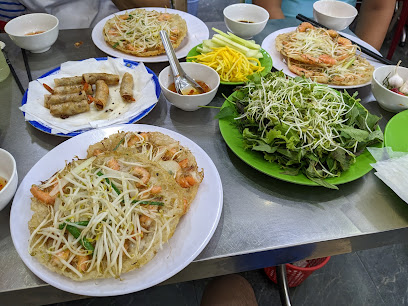
Cơm Nhà 1989
Experience the essence of Vietnam at Cơm Nhà 1989, where every dish tells a story through its rich flavors and cultural heritage.
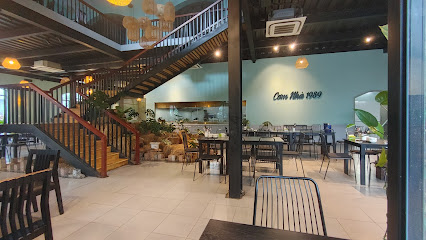
Cơm Niêu Hội An - Quy Nhơn
Experience authentic Vietnamese cuisine at Cơm Niêu Hội An in Quy Nhơn - where every dish tells a story.
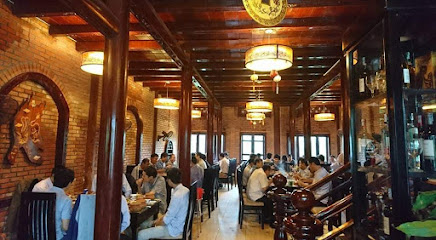
Quy Nhon Food Street
Experience the vibrant flavors of Vietnam at Quy Nhon Food Street - a culinary hotspot offering diverse local dishes and unforgettable dining experiences.
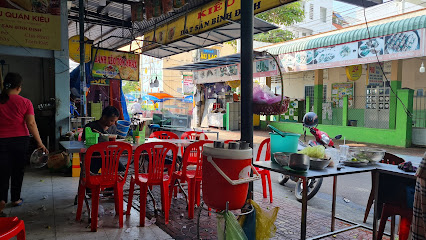
Bốn Mùa - Four Seasons Quy Nhơn
Experience the vibrant flavors of Vietnam at Bốn Mùa - Four Seasons Quy Nhơn, where culinary excellence meets coastal charm.
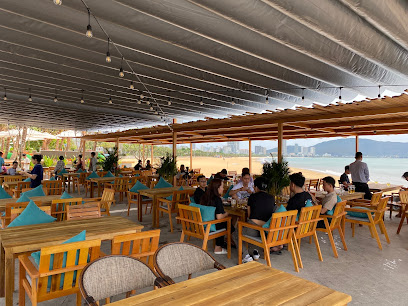
Sáu Cao 2 Restaurant
Experience the essence of Vietnamese cuisine at Sáu Cao 2 Restaurant in Qui Nhơn – where every bite tells a story.
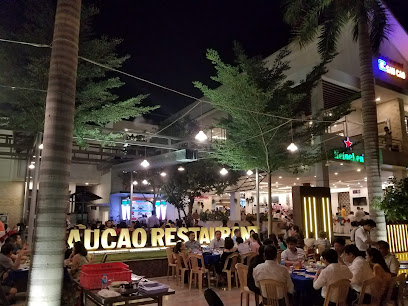
Quán Ăn Thái Lan Kaeng Thai
Savor authentic Thai flavors at Quán Ăn Thái Lan Kaeng Thai in Qui Nhơn - where every dish tells a story.
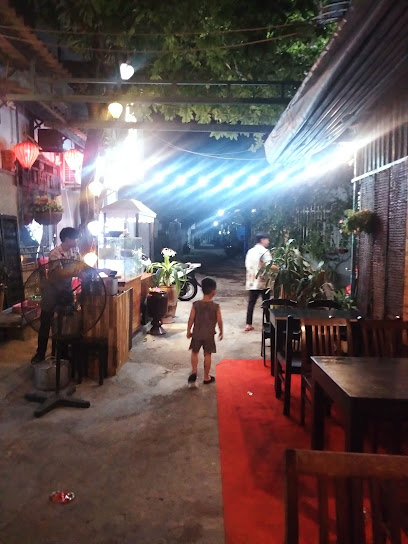
Coco Jambo Quy Nhơn - Nhà hàng Hải sản ngon Kỳ Co, Eo Gió
Discover a seafood paradise at Coco Jambo Quy Nhơn, where fresh flavors meet stunning coastal views in Vietnam.
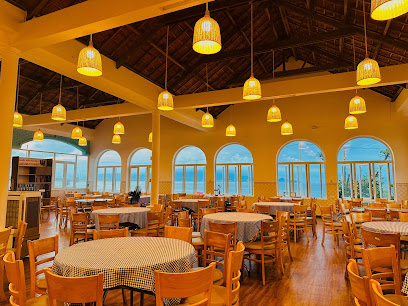
The Social - Breakfast, Pizza & Pub Food
Experience culinary delights at The Social in Qui Nhơn, where breakfast favorites meet delicious pizzas and vibrant bar vibes.
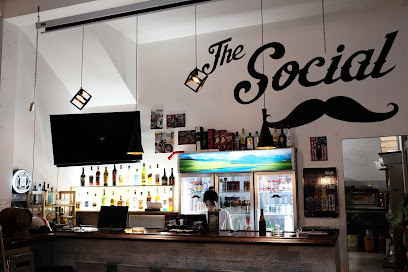
Nhà Hàng Mộc Viên Quy Nhơn
Discover authentic Vietnamese flavors at Nhà Hàng Mộc Viên Quy Nhơn – where culinary tradition meets modern dining.
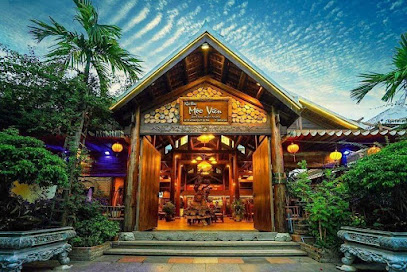
Big Tree Bistro
Experience the authentic flavors of Vietnam at Big Tree Bistro in Qui Nhơn – where every meal tells a story.
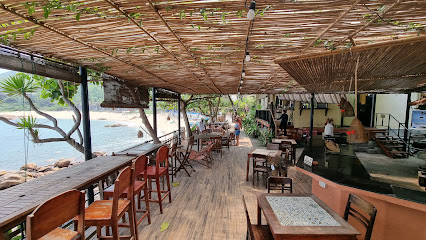
Quy Nhon Sports Bar
Experience vibrant dining and thrilling sports entertainment at Quy Nhon Sports Bar - your ultimate spot in Vietnam.
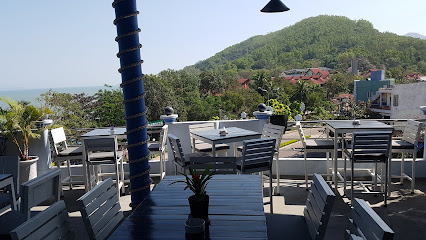
Nhà Hàng Cá Khói - Hải sản Quy Nhơn
Discover fresh seafood delicacies at Nhà Hàng Cá Khói in Quy Nhơn – where authentic Vietnamese flavors meet delightful dining experiences.
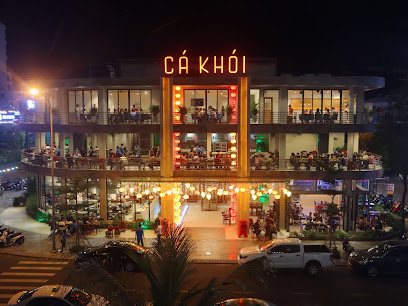
Nhà hàng Anh Nhật Gia Viên
Discover authentic Vietnamese cuisine at Nhà hàng Anh Nhật Gia Viên in Qui Nhơn - A must-visit for food lovers seeking local flavors.
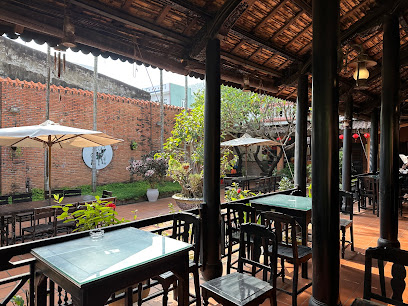
Markets, malls and hidden boutiques
GO! Quy Nhơn
Explore the vibrant GO! Quy Nhơn Hypermarket, your one-stop shopping destination for local delights and international products in the heart of Quy Nhơn, Vietnam.
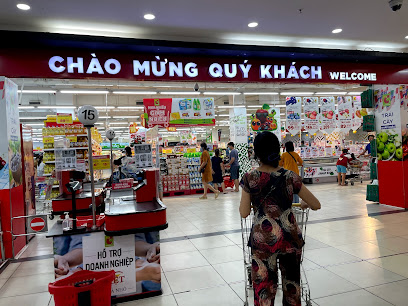
Co.opmart Quy Nhơn Supermarket
Explore the flavors of Vietnam at Co.opmart Quy Nhơn Supermarket, your go-to destination for local produce and authentic culinary experiences.
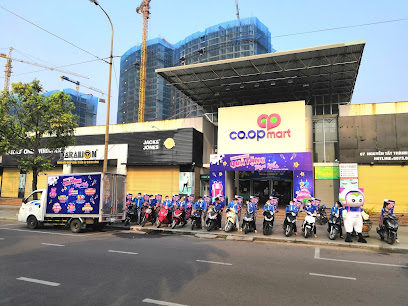
Shop Hạnh An Phú Thịnh Plaza
Discover the vibrant Shop Hạnh An Phú Thịnh Plaza in Qui Nhơn, the ultimate shopping destination for cosmetics, costumes, and local culture.
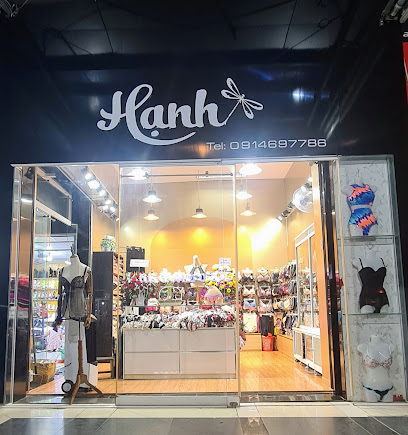
Quy Nhon Trade Center
Experience the vibrant shopping scene at Quy Nhon Trade Center, where local flavors meet global goods in a lively atmosphere.

NABI SHOP QUY NHƠN - NABISHOP1234
Explore the best of women's fashion at NABI SHOP QUY NHƠN, where style meets local craftsmanship in the heart of Vietnam.

YODY Quy Nhơn
Discover the best in local fashion at YODY Quy Nhơn, where unique clothing and accessories await to enhance your style.
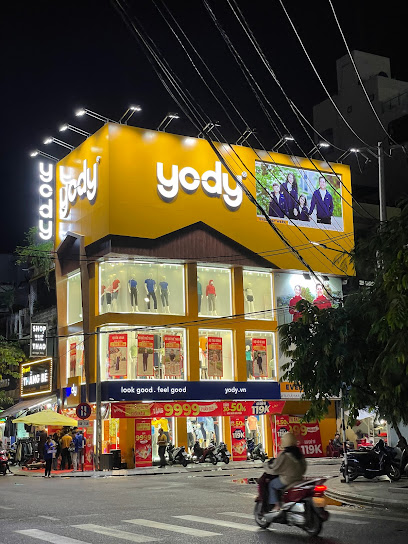
TOKYOLIFE Quy Nhơn
Discover the ultimate shopping experience at TOKYOLIFE Quy Nhơn, where fashion meets culture in a vibrant setting.

TopZone Hệ thống cửa hàng Apple Bisoan
Explore the latest Apple products and accessories at TopZone Hệ thống cửa hàng Apple Bisoan, the ultimate tech destination in Qui Nhơn, Vietnam.
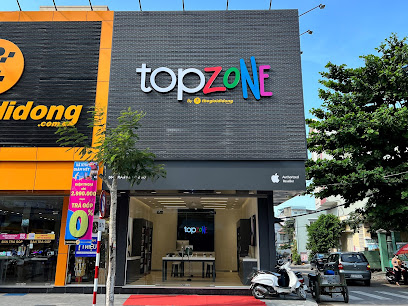
FM STYLE Quy Nhon
Explore the vibrant fashion scene at FM STYLE Quy Nhon, where unique Vietnamese styles meet contemporary trends in a welcoming atmosphere.

Shop Thời Trang Nam Owen
Discover Owen in Qui Nhơn: A premier men's clothing store offering stylish apparel for every occasion and taste.
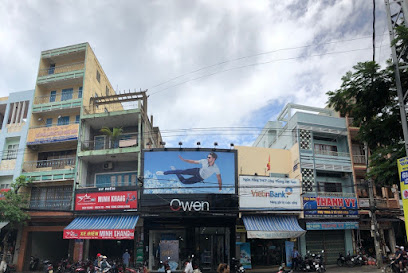
Adam Store Quy Nhơn
Explore Adam Store Quy Nhơn for stylish men's fashion that combines quality, comfort, and contemporary style in the heart of Vietnam.
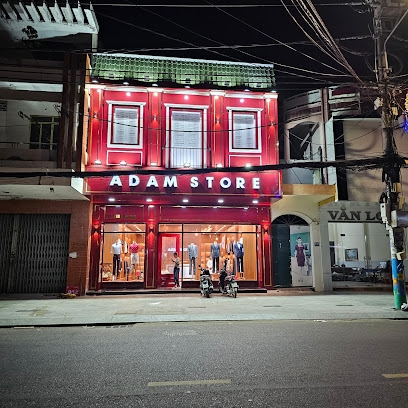
MINISO QUY NHƠN
Explore trendy and affordable shopping at MINISO QUY NHƠN, a must-visit store in Quy Nhơn, Vietnam for unique souvenirs and essentials.

Gumac
Explore the latest women's fashion and accessories at Gumac in Qui Nhơn, Vietnam - a must-visit shopping destination for every fashion enthusiast.

HaNi cosmetic-Mỹ phẩm Hàn Quốc Quy Nhơn
Explore the best of Korean beauty at HaNi Cosmetic in Quy Nhơn, where quality meets variety for all your skincare and makeup needs.
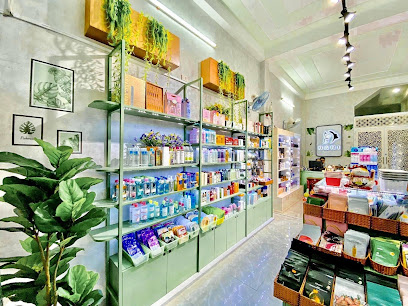
MÁY LỌC NƯỚC YAKYO QUY NHƠN- SHOWROOM YAKYO
Explore Yakyo Showroom in Quy Nhon for premium water purification solutions and learn the importance of clean drinking water.
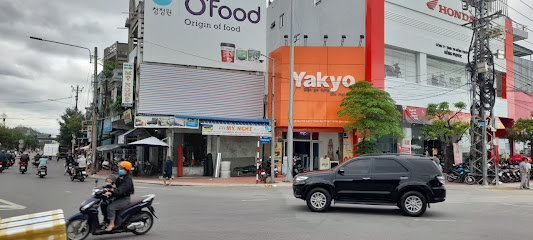
Essential bars & hidden hideouts
KYOTO Club Lounge
Discover the vibrant nightlife of Qui Nhơn at KYOTO Club Lounge, where exquisite drinks and lively entertainment await.
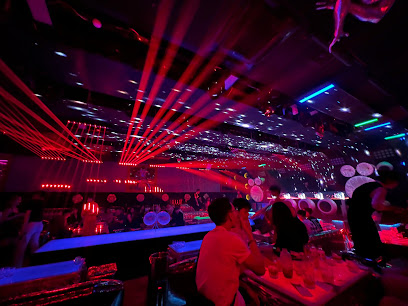
The Social - Breakfast, Pizza & Pub Food
Experience the vibrant flavors of Qui Nhon at The Social, where breakfast, pizza, and pub food come together in a lively setting.
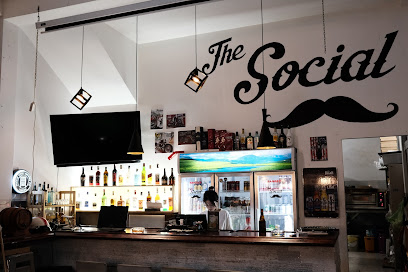
Quy Nhon Sports Bar
Experience the lively dining scene at Quy Nhon Sports Bar, where delicious food, refreshing drinks, and sports unite for an unforgettable outing.
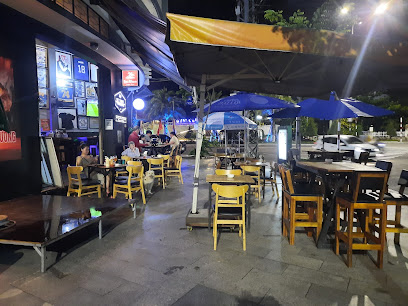
Unique Craft Beer
Discover the vibrant flavors of Qui Nhơn at Unique Craft Beer, where handcrafted brews meet delicious local cuisine.

Eureka The Cocktail Bar
Experience the vibrant nightlife at Eureka The Cocktail Bar in Qui Nhơn, Vietnam, where innovative cocktails meet a lively atmosphere.

Karma Lounge Quy Nhơn
Experience the vibrant nightlife at Karma Lounge Quy Nhơn, where expertly crafted cocktails meet stunning seaside views.
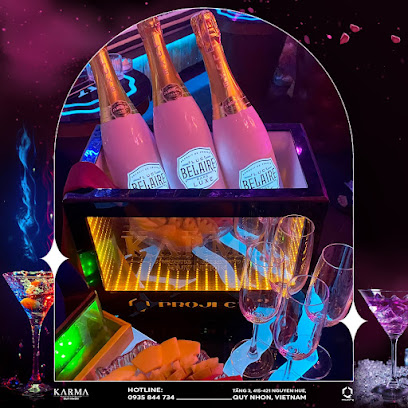
THƠM Cocktail Bar
Discover the vibrant nightlife of Qui Nhơn at THƠM Cocktail Bar, where innovative cocktails meet a lively atmosphere for an unforgettable evening.
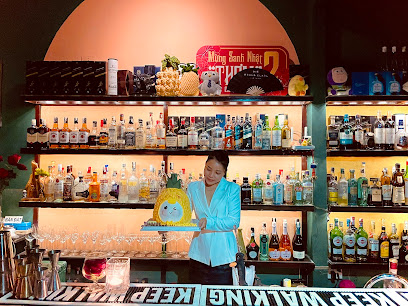
Coeur
Discover the charm of Coeur in Qui Nhơn, where local cuisine meets international flair in a cozy bistro and bar setting.
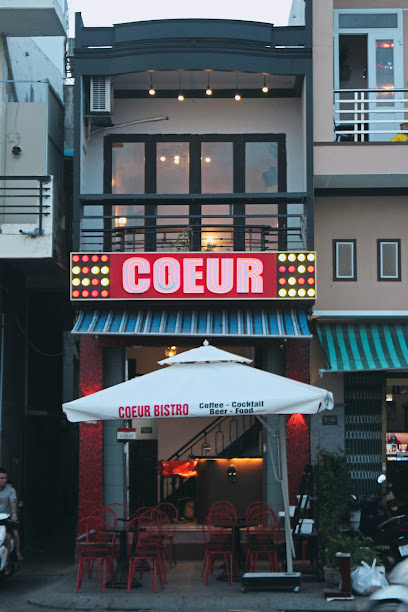
V CLUB Quy Nhon
Experience the vibrant nightlife at V CLUB Quy Nhon, where great drinks meet electrifying entertainment in a stunning atmosphere.

CEO Pub Quy Nhơn
Discover the vibrant nightlife of Quy Nhơn at CEO Pub, where great drinks and lively atmosphere await you.
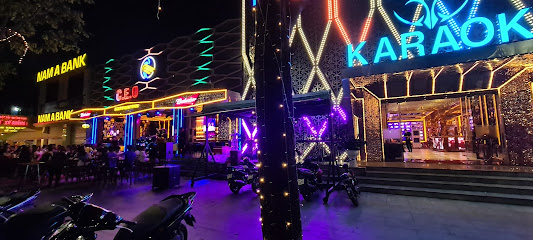
L'amour Lounge - Bespoke Cocktails & Whiskies
Experience the best of bespoke cocktails and premium whiskies at L'amour Lounge, Qui Nhon's sophisticated bar for discerning travelers.
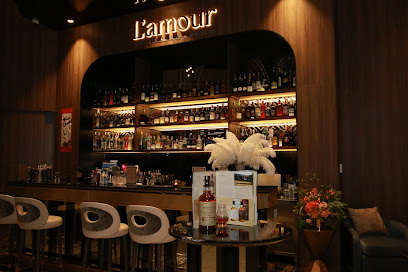
A Cocktail Bar Quy Nhơn
Experience the essence of Quy Nhơn at A Cocktail Bar, where exquisite cocktails and a vibrant atmosphere create unforgettable nights.
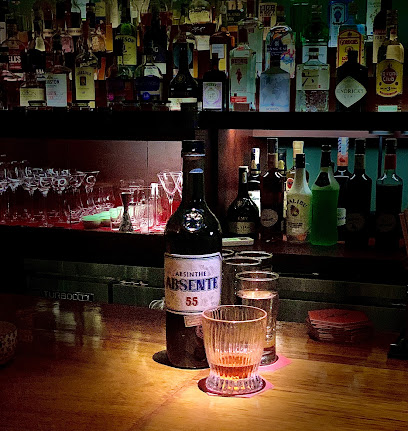
Phim Bar
Experience the vibrant atmosphere of Phim Bar in Qui Nhơn, where coffee meets cocktails in a cozy setting perfect for relaxation and socializing.

ROYAL CLUB
Discover the vibrant nightlife at Royal Club in Qui Nhon, where great drinks and ocean views create an unforgettable experience.
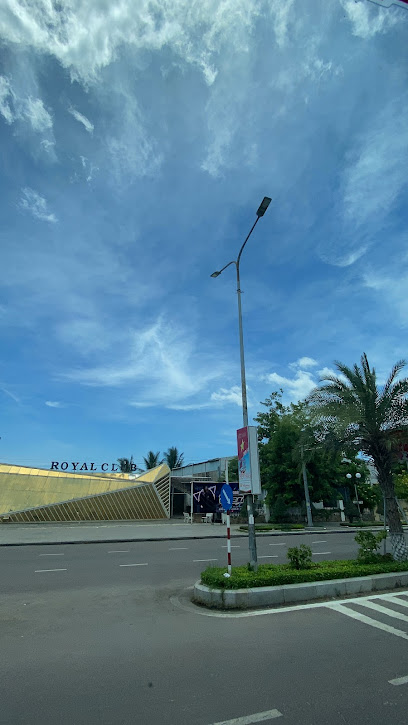
The Fellowship Tiki & Mixology Cocktail Bar
Discover The Fellowship Tiki & Mixology Cocktail Bar, a vibrant escape in Qui Nhơn with innovative cocktails and a lively atmosphere.
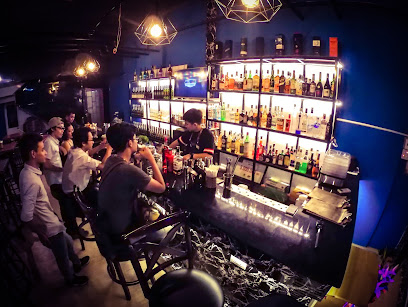
Local Phrases
-
- HelloXin chào
[sin chow] - GoodbyeTạm biệt
[tahm byet] - YesCó
[koh] - NoKhông
[kohng] - Please/You're welcomeXin vui lòng
[sin vwee long] - Thank youCảm ơn
[kahm uhn] - Excuse me/SorryXin lỗi
[sin loy] - How are you?Bạn khỏe không?
[bahn kweh kohng?] - Fine. And you?Tốt. Còn bạn?
[toht. kawn bahn?] - Do you speak English?Bạn nói tiếng Anh không?
[bahn noy tyeng ahn kohng?] - I don't understandTôi không hiểu
[toy kohng hyehu]
- HelloXin chào
-
- I'd like to see the menu, pleaseTôi muốn xem menu, xin vui lòng
[toy mwohn sehm menu, sin vwee long] - I don't eat meatTôi không ăn thịt
[toy kohng ahn tit] - Cheers!Chúc sức khỏe!
[chook sook kweh] - I would like to pay, pleaseTôi muốn thanh toán, xin vui lòng
[toy mwohn thanh toan, sin vwee long]
- I'd like to see the menu, pleaseTôi muốn xem menu, xin vui lòng
-
- Help!Cứu giúp!
[kyoo zoop] - Go away!Đi ra!
[dee rah] - Call the Police!Gọi cảnh sát!
[goy kahng saht] - Call a doctor!Gọi bác sĩ!
[goy bahk see] - I'm lostTôi lạc đường
[toy lahk doong] - I'm illTôi ốm
[toy ohm]
- Help!Cứu giúp!
-
- I'd like to buy...Tôi muốn mua...
[toy mwohn mwa] - I'm just lookingTôi chỉ xem thôi
[toy chee sehm toy] - How much is it?Giá bao nhiêu?
[jah bao nyew] - That's too expensiveĐắt quá
[daht kwah] - Can you lower the price?Có thể giảm giá được không?
[koh tay jam jah dohk kohng?]
- I'd like to buy...Tôi muốn mua...
-
- What time is it?Bây giờ là mấy giờ?
[by gyo la may zoh?] - It's one o'clockBây giờ là một giờ
[by gyo la mot zoh] - Half past (10)Mười giờ kém nửa
[mooee zoh kem nooah] - MorningBuổi sáng
[booee sang] - AfternoonBuổi chiều
[booee cheeoo] - EveningBuổi tối
[booee toy] - YesterdayHôm qua
[hom kwah] - TodayHôm nay
[hom nigh] - TomorrowNgày mai
[nyigh my] - 1Một
[mowt] - 2Hai
[high] - 3Ba
[bah] - 4Bốn
[bohn] - 5Năm
[nahm] - 6Sáu
[sow] - 7Bảy
[bahy] - 8Tám
[tahm] - 9Chín
[cheen] - 10Mười
[mooee]
- What time is it?Bây giờ là mấy giờ?
-
- Where's a/the...?Ở đâu có...
[uh dow koh] - What's the address?Địa chỉ là gì?
[deeah chee la zee?] - Can you show me (on the map)?Bạn có thể chỉ cho tôi (trên bản đồ) không?
[bahn koh tay chee chaw toy tren bahn doh kohng?] - When's the next (bus)?Khi nào là chuyến xe buýt tiếp theo?
[kee now la chuyen se buht tyep theo?] - A ticket (to....)Một vé (đi ...)
[mowt vay dee]
- Where's a/the...?Ở đâu có...
History of Quy Nhon
-
Quy Nhon was an important city within the Champa Kingdom, which thrived from the 2nd century to the 15th century. The region was known for its rich cultural heritage, including elaborate temples and sophisticated art forms. The Champa people were seafaring traders, and Quy Nhon served as a key port in their maritime network.
-
In the late 18th century, Quy Nhon became the epicenter of the Tay Son Rebellion, a significant uprising led by three brothers from the Tay Son village. The rebellion aimed to overthrow the corrupt ruling class and unify Vietnam. Nguyen Hue, one of the brothers, later became Emperor Quang Trung and is celebrated for his military genius and efforts to unify the country.
-
During the Nguyen Dynasty, from the early 19th century to the mid-20th century, Quy Nhon was developed into a bustling port city. The Nguyen Emperors invested in infrastructure, including the construction of roads, bridges, and public buildings, which facilitated trade and commerce. This era also saw the construction of several pagodas and temples that still stand today.
-
Under French colonial rule from the late 19th century until 1954, Quy Nhon experienced significant changes. The French built administrative buildings, schools, and hospitals, many of which still exhibit colonial architectural influences. The city became a hub for exporting agricultural products like rice and rubber, and the French introduced Western education and medical practices.
-
Quy Nhon played a strategic role during the Vietnam War due to its coastal location and port facilities. It served as a major logistics base for the South Vietnamese and American military forces. The city endured significant damage from bombings and battles, but it also became a center for medical care, with several field hospitals established to treat wounded soldiers.
-
After the reunification of Vietnam in 1975, Quy Nhon underwent a period of rebuilding and recovery. The government focused on reconstructing infrastructure and reviving the local economy. Fishing, agriculture, and tourism became key industries. The city also invested in education and healthcare, establishing universities and hospitals that serve the region.
-
Today, Quy Nhon is a vibrant city known for its beautiful beaches, cultural landmarks, and robust economy. The city has retained its historical charm while embracing modernity, with new developments in tourism, industry, and education. Quy Nhon is a popular destination for both domestic and international tourists, drawn by its rich history, scenic landscapes, and warm hospitality.
Quy Nhon Essentials
-
Quy Nhon is located in the Binh Dinh Province of Vietnam. The nearest airport is Phu Cat Airport (UIH), which is approximately 30 kilometers from the city center. From major cities like Hanoi and Ho Chi Minh City, you can take a direct flight to Phu Cat Airport. Alternatively, you can travel by train from Hanoi or Ho Chi Minh City to Quy Nhon Railway Station, which offers a scenic journey along Vietnam's coastline. Buses are also available and connect Quy Nhon with various cities across the country.
-
Quy Nhon is a relatively small city, and many attractions are within walking distance. For longer distances, local taxis and ride-hailing services like Grab are readily available. Motorbike rentals are popular and offer a convenient way to explore the city and surrounding areas. Public buses operate within the city and connect to nearby towns. For a more local experience, consider taking a 'xe om' (motorbike taxi).
-
The official currency in Vietnam is the Vietnamese Dong (VND). Credit cards are accepted in most hotels, restaurants, and shops in Quy Nhon, but it is advisable to carry cash for smaller establishments and local markets. ATMs are widely available throughout the city. Make sure to inform your bank of your travel plans to avoid any issues with card transactions.
-
Quy Nhon is generally a safe destination for tourists. However, like any travel destination, it is advisable to take standard precautions. Avoid walking alone at night in unfamiliar areas and keep an eye on your belongings in crowded places. Although Quy Nhon does not have specific high-crime areas targeting tourists, it is always best to stay vigilant and aware of your surroundings.
-
In case of emergency, dial 113 for police, 114 for fire, and 115 for medical assistance. The main hospital in Quy Nhon is Binh Dinh General Hospital, which provides comprehensive medical services. It is recommended to have travel insurance that covers medical emergencies. For minor health issues, pharmacies are available throughout the city where you can purchase over-the-counter medications.
-
Fashion: Do dress modestly, especially when visiting religious sites. Avoid wearing overly revealing clothing. Religion: Do respect local customs and traditions. Always remove your shoes when entering temples and pagodas. Public Transport: Do be respectful and give up your seat to elderly passengers. Don't eat or drink on public transport. Greetings: Do greet people with a smile and a slight bow. Handshakes are also acceptable. Eating & Drinking: Do try local delicacies and accept food offerings graciously. Don't refuse hospitality, as it is considered impolite.
-
To experience Quy Nhon like a local, visit the local markets such as Quy Nhon Market and Dam Market where you can buy fresh produce and traditional Vietnamese goods. Engage with locals, as they are often friendly and willing to share stories about the city's history and culture. Don't miss visiting the beautiful Ky Co Beach and taking a boat trip to Hon Kho Island. For a unique experience, enjoy a meal at a local seafood restaurant where you can select your seafood fresh from the tank.
Trending Landmark in Quy Nhon
-
Ky Co Beach
-
Công ty du lịch Quy Nhơn Tourist
-
Linh Phong - Ong Nui Temple
-
Banh It Cham Temple (Yang M'Tian)
-
Núi Vũng Chua
-
Bãi trứng - khu du lịch Ghềnh Ráng
-
Quy Nhon Square
-
Bãi biển Quy Nhơn
-
Eo Gió
-
Quy Nhon Cathedral
-
Seagate theme park
-
Tháp Đôi Quy Nhơn
-
Quy Nhon Stadium
-
Han Mac Tu's Memorial House
-
Long Khanh Pagoda
Nearby Cities to Quy Nhon
-
Things To Do in Nha Trang
-
Things To Do in Buon Ma Thuot
-
Things To Do in Tam Ky
-
Things To Do in Dalat
-
Things To Do in Hoi An
-
Things To Do in Da Nang
-
Things To Do in Mui Ne
-
Things To Do in Phan Thiet
-
Things To Do in Hue
-
Things To Do in Kratie
-
Things To Do in Champasak
-
Things To Do in Pakse
-
Things To Do in Ho Chi Minh City
-
Things To Do in Vung Tau
-
Things To Do in Ubon Ratchathani











